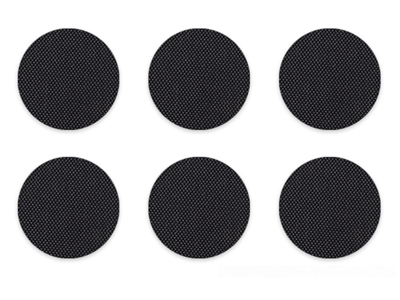Focus on PUW EPTFE Material Co., Ltd - Get to know the new information of the industry quickly!

2025-08-13 15:11:21
In materials science and engineering applications, Waterproof Membranes are essential functional materials widely used in construction, outdoor gear, medical devices, and electronics. With technological advancements, ultrathin waterproof membranes have become a highly discussed product segment. Compared to standard waterproof membranes, they offer unique advantages in thickness, breathability, flexibility, and weight control.
This article will provide an in-depth comparison of ultrathin and standard waterproof membranes from the perspectives of structure, performance, applications, production costs, and future trends, while highlighting their value in Waterproof Breathable Membrane technology.

Standard Waterproof Membrane
Thickness: Typically 50–200 microns, suitable for withstanding significant mechanical stress.
Materials: Commonly made from polyurethane (PU), polytetrafluoroethylene (PTFE), or thermoplastic polyurethane (TPU).
Structure: Single or multi-layer composites focusing on waterproof performance and durability.
Ultrathin Waterproof Membrane
Thickness: As low as 10–30 microns, almost negligible weight addition.
Materials: PU, PTFE, and nanocoatings or high-polymer ultrathin films.
Structure: Often microporous, combining with Waterproof Breathable Membrane technology to balance waterproofing and breathability.
Standard Membranes
Offer strong waterproofing with hydrostatic pressure ratings of 5000–20000 mmH₂O, but their breathability is relatively low, particularly in thick designs, which can affect comfort in wearable applications.
Ultrathin Membranes
Thanks to microporous design and low thickness, ultrathin membranes maintain waterproofing while greatly enhancing breathability. Certain Waterproof Breathable Membrane designs achieve water vapor transmission rates exceeding 20000 g/m²/24h, ideal for long-duration wear or ventilated environments.
Standard membranes: Relatively stiff, highly wear-resistant, but may feel rigid in close-fitting garments.
Ultrathin membranes: Highly flexible, maintaining fabric drape, suitable for functional apparel, sportswear, and high-end outdoor gear.
Flexibility is one of ultrathin membranes’ most notable advantages in Waterproof Breathable Membrane applications, balancing breathability and weather resistance.
Standard membranes: Excellent abrasion and chemical resistance, suitable for prolonged exposure to harsh conditions.
Ultrathin membranes: Perform well in everyday and lightweight applications but may be less durable under high friction or impact.
Advances in nanocoatings and polymer composites are steadily improving ultrathin membrane durability.
Weight is an absolute advantage of ultrathin membranes. For climbing jackets, camping tents, and lightweight backpacks, reducing material weight significantly improves user experience. Ultrathin membranes weigh only 30–50% of standard membranes, making them highly attractive for lightweight applications.
| Application | Standard Membrane | Ultrathin Membrane |
| Outdoor jackets | High waterproof, heavier | Highly breathable, lightweight |
| Building waterproof layers | Thick and durable | Rarely used |
| Electronic device protection | Thick, long-term sealing | Suitable for portable devices |
| Medical devices | Surgical gowns, disposable protection | Breathable medical membranes |
| Waterproof Breathable Membrane garments | Limited breathability | High breathability, comfortable |
Standard membranes: Mature production, relatively low cost, suitable for mass production.
Ultrathin membranes: Require precise coating or nanotechnology, more complex to produce, higher cost, but in high demand in premium markets.
As consumers demand more comfort, lightweight materials, and eco-friendliness, ultrathin membranes in Waterproof Breathable Membrane technology will continue to expand. Future directions may include:
Biodegradable ultrathin membranes for sustainable applications.
Smart temperature-controlled membranes integrated with wearable technology.
Nanostructure-enhanced membranes providing higher strength while maintaining ultrathin form.
Standard waterproof membranes are renowned for durability and stability, suitable for high-wear applications. Ultrathin waterproof membranes excel in lightweight, breathable, and comfortable designs, making them increasingly favored in premium markets. In Waterproof Breathable Membrane applications, ultrathin membranes are poised to become a core material for functional apparel and portable protective products.

Telephone: 0769-22850556
Email: lvch@puw-eptfe.com
Address: No.20, Wanjiang Industrial Street, Wanjiang District, Dongguan City, Guangdong Province, China
© 2025 PUW EPTFE Material Co., Ltd. All rights reserved.
Privacy policy | Terms and Conditions